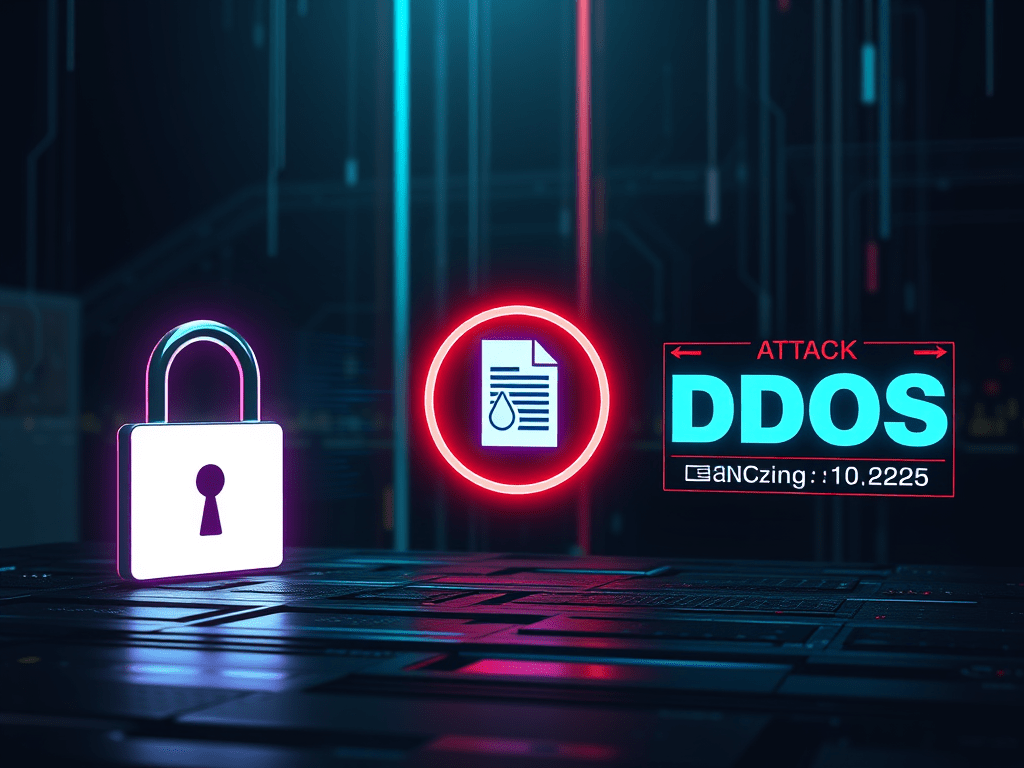Introduction
You’ve heard of ransomware, right? The digital equivalent of someone holding your lunch hostage until you pay up. It’s an unwelcome trend that’s made more than just a few headlines.
Often, victims feel the pressure to pay the ransom. This is when the dastardly villains use double extortion — a fancy way of saying “give us more money, or we’ll spill your secrets and ruin your reputation faster than you can say ‘Oops!’”
But wait, there’s more! Just when you thought it couldn’t get crazier, a third layer has joined the fray, cranking up the pressure on victims to hand over even bigger bucks. Buckle up for the rollercoaster ride of cybercriminality!
In a triple extortion attack, the bad guys really up the ante, like adding extra toppings to your already loaded pizza of doom.
What Is Triple Extortion?
Imagine three layers of chaos stacked on top of each other, like a very stressful cake.
The first extortion is the ransomware itself. Pay the ransom, or say goodbye to your beloved data! It’s like a paywall, but for your files.
The second extortion is the delightful bonus of threatening to release your private information—either on the Dark Web or in a flash mob at your workplace—unless you cough up even more money.
This new, third layer of extortion turns the heat up even further. The miscreants might threaten you with Distributed Denial of Service (DDoS) attacks or target your customers and partners. It’s like saying, “If you don’t do what we want, everyone you love is on the chopping block!” Talk about a dramatic twist!
Just remember: paying up is no guarantee that they’ll keep their word. Their only promise is to break your heart, along with your bank account. Many people find that after paying, they recover about as much as they would from a soggy pizza. In fact, paying the ransom just encourages these crooks to keep the fun going!
Staying Safe from Ransomware and Extortion
With ransomware attacks affecting millions across the globe, one might wonder: how does one avoid the cyber villains? Let’s arm you with prevention tactics that are more effective than a garlic necklace against vampires.
- Regularly store backups in a secure offline location. Treat your backups like you would your prized possessions—because they are!
- Use strong security measures: think of firewalls and antivirus software as your digital security guards, fending off the bad guys.
- Keep your software and systems updated with the latest security patches. Outdated software is like leaving the door wide open for unwanted guests.
- Stay informed about safe online practices. Remember, human error is often the reason for successful cyberattacks—like clicking the link you swore you wouldn’t!
- Limit data access based on the principle of least privilege. Only give people access to the data they need, like making sure your kid can only access the cookie jar when supervised!
- Memorize your workplace’s Incident Response Plan—because when disaster strikes, you want to know if you should run, hide, or call for reinforcements!
- Segment your network like you would with your pizza toppings: keep the veggies separate from the pepperoni! This helps contain the damage in case an attack occurs.
- Assess the security practices of third-party vendors. After all, you don’t want your trusted partners to become a weak link in your cyber defense chain!
What Should You Do If Ransomware Threatens You?
When ransomware appears on your device, it can feel like someone just set off a fire alarm in a crowded theater—panic mode engaged!
First things first: never, ever pay the ransom. Because, let’s face it, the only thing you’re likely to get back is disappointment!
- Step 1: Isolate the affected device from the network and other systems. Think of it as cutting the rogue vegetable out of your salad.
- Step 2: Call for help from your IT provider and possibly the authorities. This isn’t a DIY project; it’s time to call in the cavalry!
- Step 3: Damage control to try and recover everything possible. Channel your inner superhero—what can you save?
- Step 4: Clean up with antivirus programs and remove the threat. Like brushing your teeth after a sugar binge!
With the right backup and storage protocols in place, you should emerge relatively unscathed, like a superhero after a battle.
Conclusion
Ransomware is becoming increasingly complex, more expensive, and way too popular—like avocado toast for millennials! We must learn the bad guys’ tactics, how to avoid them, and how to recover to remain as cyber-safe as possible.
In this evolving threat landscape, staying alert and adaptable is crucial. As threat actors develop new layers to their cyberattacks, preparedness and proactive defenses are your best bet to keep them at bay. So, stay sharp, keep your safety gear handy, and maybe invest in that garlic necklace after all!
The post Is Triple Extortion The Next Big Ransomware? appeared first on CyberSafe.





